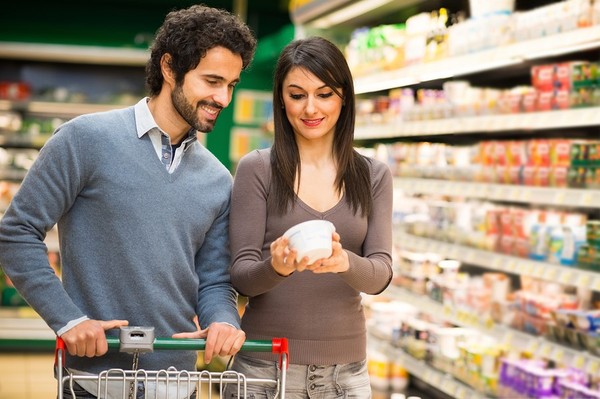
As CPG packaging trends toward reuse and recycle, there are some component parts in the process that make things challenging. Packaging food products offer some unforeseen challenges that CPG marketers must overcome.
CPG Packaging Challenges
Nearly one-third of all CPG packaging ends up in the landfill. These numbers are unacceptable both to consumers and CPG marketers. What consumers might not realize is that plastic with food residue is terribly hard to reuse. Many times grab and go containers, which are increasingly popular for the sake of convenience, are made up of interwoven layers of foil, plastic, and paper. While CPG packaging experts typically say that these layers are necessary to keep food fresher longer, they are diligently working to improve these products to make them more environmentally friendly.
Some of the issues affecting CPG packaging waste include issues with transportation. Take convenience drinks as an example. These products must have tough and sterile packaging to survive transport, but companies must have a way to recycle and refill the empties or rely on third-party vendors to do something with the CPG packaging. Glass is more breakable and presents its own challenges.
If plastic remains the best option for food packaging, there’s another problem to consider. Of course, not all plastic is even recyclable. Black plastic deflects the light, which can help protect the food product inside. But it isn’t recyclable. Colored glass has a different issue; it cannot be mixed with clear glass in the recycling process.

These are not the only problems plaguing CPG packaging teams. The Packaging Consortium lists some of the most challenging types of packaging to recycle:
- Black plastic containers
- Colored opaque PET
- Compostable plastics
- Corrugated cardboard trays with plastic film
- Full shrink-wrap labels
- Hot beverage poly-coated cups
- Metalized tubes
- Multilayered laminates
- Non-PET clamshells
- Single-serve hot beverage pods
Part of the issue is that, while some of these materials are recyclable, they pose sorting and processing issues for material recovery facilities. These organizations are highly efficient at processing PET and HDPE containers, glass bottles, corrugated boxes, paperboard, and aluminum and steel cans. But new (and these days) more popular mixed materials cause the production to shut down in these plants.
Popular CPG company Nestle understands the challenges and the necessity of recycling food-grade product packaging, noting:
“There has been considerable progress in ensuring the use of only a minimum adequate amount of plastic packaging to pack products safely, and the recovery of plastic at the end of its useful life. Nevertheless, there is much more to do. Indeed, plastic must not end in nature and we are taking action to help create a waste-free future.”
Their organization suggests an emphasis on the following areas in the future to improve the recyclability of CPG packaging for food and consumable products:
- Bio-based plastics
- Plastic-free packaging
- Removal of difficult plastics
- Simplification of materials
PKG Brand Design is always on the forefront of new CPG branding and packaging initiatives; please subscribe to our blog for the latest package design industry news!







